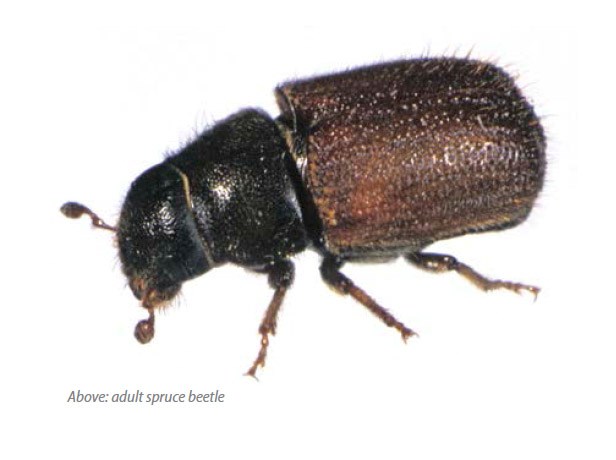Industry and government are working with other partners to harvest the growing number of trees killed in the current spruce beetle outbreak.
With more than 250,000 hectares in the Prince George district already damaged by the largest spruce beetle outbreak in more than 30 years, the clock is already ticking to log the dead trees while they still have commercial value.
There is a seven-year look ahead plan that is key to battling the spruce beetle devastation.
"The key to this thing is the area licensees, including Conifex, Canfor, Sinclar Group Forest Products, BC Timber Sales, Carrier Lumber, they are going to harvest, they are going to address where that beetle is and what they can get at, " John Pousette, director for the Provincial Bark Beetle Response who was appointed to coordinate response efforts across the province, said.
Every year plans are updated after an evaluation to consider the latest in monitoring.
As far as controlling the spruce beetle infestation, the government is relying on harvesting while taking extra care to keep the unaffected portion of the forest intact.
In today's market, spruce beetle killed timber has a five-year shelf life but longer if the wood is used as fibre for pulp or bioenergy.
CNC was part of a multi-partner milling study that was done recently to see the grade and product value when processing spruce beetle killed timber and the results showed a reduction on lumber end-product value.
Stumpage rates will be significantly lower now to reflect the downgrade of spruce beetle killed wood and to encourage salvage.
Despite the lower stumpage fees, certain forest licensees have suggested some stands that were attacked by the spruce beetle early on are not profitable in the current market.
BC Timber Sales has seen several "no bids" on spruce beetle impacted wood in the Mackenzie area.
The Land Based Investment Strategy (LBIS) has spent about $1 million per year over the past five years in the Omineca Region on flights to identify impacted areas and surveys to identify priority operational areas, as well as wood decay research and public engagement.
"Because the mountain pine beetle was here and our mid-term timber supply (11-50 years) was reduced because of that our main goal is to maintain a mid-term timber supply as high as possible and that means we want licensees to focus their harvest on dead and dying trees," Pousette said. "We don't want them to focus on green trees. If there are dead trees out there to harvest, that's where we want them to cut because every green tree they harvest is a tree that could be harvested later on."
When possible, the expectation is that trees containing live beetles be removed selectively from any stand before spreading to unaffected areas. The most severely impacted stands will be of the highest priority for planning and harvesting and stands will be harvested in order of descending priority.
Stands with less than 50 per cent dead trees without a significant component of susceptible spruce beetle infestation have a low priority for harvest, especially when analysis shows good potential for the reestablishment of these stands to contribute to the future timber supply.
Whether to harvest or conserve old growth spruce stands is a difficult decision.
"A lot of old gowth trees are spruce," Pousette said. "Old spruce is susceptible to spruce beetle and we then have to accept the fact that we may be leaving old dead trees. It gets kind of complicated in terms of values and what we're doing out there. Our main objective right now is to maintain the mid term timber supply."
Right now for example, Pousette said, the maximum allowable cut determination for Mackenzie is 4 million cubic metres and of that only 2 million cubic metres is live and the rest is dead trees being harvested.
Because the Prince George area has been hit hard, Pousette said that if all of the attacked trees were logging over a short time, the logged areas would be quite bare.
Leaving the mature growth in a spruce stand might look bad in the short term but spruce tree stands are not like pine forests. There is significant secondary growth in spruce stands. Often, what lies below the tall spruce in a stand is a diverse blend trees of all ages and species that include balsam, pine, fir, hemlock and spruce. Sometimes leaving the dead trees in a stand to be over taken by the younger spruce growing underneath is the best choice.
"So we have to be careful what we choose - what we leave and what we don't," Pousette said.



